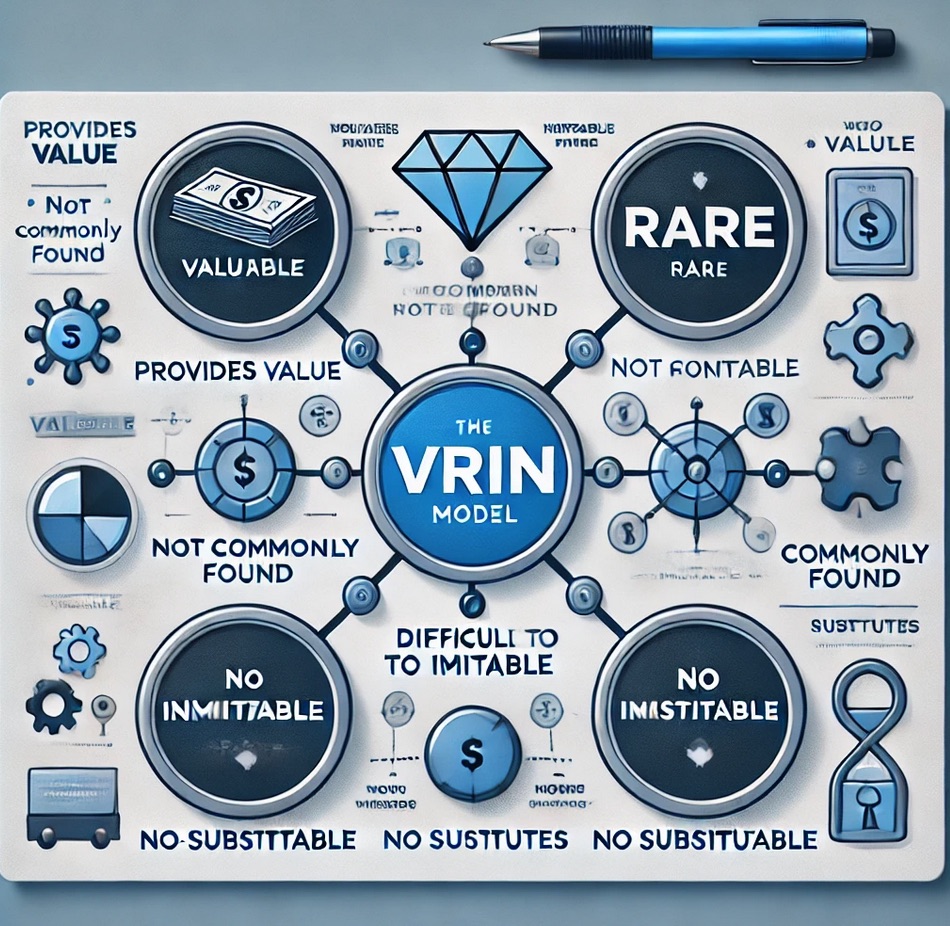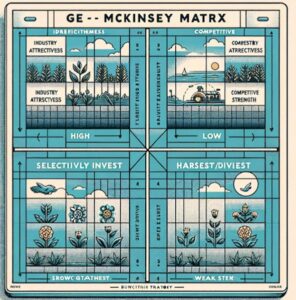VRIN Model

The VRIN model is a strategic management tool used to evaluate a firm’s resources and capabilities to determine their potential for creating a sustainable competitive advantage. VRIN stands for Valuable, Rare, Inimitable, and Non-substitutable, which are the four criteria used to assess the strategic importance of resources. Here’s a detailed overview of each criterion:
- Valuable: A resource must provide value to the firm by enabling it to exploit opportunities or neutralize threats in the market. Valuable resources contribute to improved efficiency and effectiveness, leading to higher profitability.
- Rare: A resource must be scarce relative to demand. If a resource is widely available, it cannot provide a competitive advantage. Only resources that are unique or rare within the industry can offer this potential.
- Inimitable: A resource must be difficult or costly for competitors to imitate. This could be due to unique historical conditions, causal ambiguity (where the cause of a resource’s effectiveness is unclear), or social complexity (such as interpersonal relationships and company culture).
- Non-substitutable: There must be no strategically equivalent valuable resources that are themselves either not rare or imitable. This means that the resource cannot be replaced by another resource that can provide the same value.
Application of the VRIN Model
The VRIN model is typically used in the following steps:
- Identify Key Resources and Capabilities: List the firm’s resources and capabilities.
- Evaluate Each Resource Against VRIN Criteria: Assess whether each resource is valuable, rare, inimitable, and non-substitutable.
- Strategic Implications: Determine which resources and capabilities can be leveraged for sustained competitive advantage.
- Resource Management: Develop strategies to protect, develop, and leverage these key resources.
Example
Consider a tech company with a unique software algorithm.
- Valuable: The algorithm significantly improves processing speeds, providing a better user experience.
- Rare: No other company has developed a similar algorithm.
- Inimitable: The complexity of the algorithm and the expertise required to develop it make it difficult for competitors to replicate.
- Non-substitutable: There are no other algorithms or technologies that can match its performance and efficiency.
Similar Tools and Methodologies
- SWOT Analysis: This tool analyzes the Strengths, Weaknesses, Opportunities, and Threats of a company. While VRIN focuses on internal resources, SWOT includes both internal and external factors.
- Porter’s Five Forces: This framework assesses industry structure and competitive intensity to determine profitability potential. It complements VRIN by evaluating external industry forces rather than internal resources.
- Resource-Based View (RBV): This broader perspective focuses on the strategic management of a firm’s resources. VRIN is often considered a key component within the RBV framework.
- Core Competencies: Identifies a firm’s unique strengths that provide competitive advantages. Similar to VRIN, but with a focus on the integration of resources and capabilities.
- Value Chain Analysis: Examines the internal activities of a firm to understand the sources of value creation. This method can highlight valuable resources in the context of the firm’s overall operations.
By utilizing the VRIN model alongside these complementary tools and methodologies, firms can gain a comprehensive understanding of their strategic resources and how best to leverage them for sustained competitive advantage.



